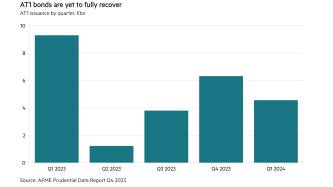This article is part of The Banker’s Special Report, Digital transformation across European banking groups, in association with Backbase.
Q: What is your digital transformation strategy?
A: Digitalisation is a key component of our Team 23 strategic plan, which focuses on increasing productivity and enhancing customer experience. UniCredit has already made good progress on our digital journey, through our previous plan, Transform 2019. This was clear in our swift response to the Covid-19 crisis.
Further reading
We quickly shifted to meet the needs of our customers, with remote services leading the way. We were able to seize commercial opportunities and, in just one month, we increased our customers’ mobile adoption by more than 5% and inbound calls to our call centres rose by 25%.
Our service infrastructure, including branches, the internet, mobile banking and call centres, and our key products are already available throughout central and eastern Europe (CEE). We are working to achieve a simple omnichannel solution: a single process with the same look and feel across all channels. The Czech Republic will be the first country to go truly omnichannel, providing a simple and intuitive customer experience that will become a benchmark for financial services in the region.
Q: How is it being rolled out across your regional footprint?
A: We are committed to offering a consistent service across all our geographies. We listen to our customers to understand their local needs. As a result, on top of the omnichannel solution, we are rolling out our digital strategy in two ways.
The first is through high-level, standardised, often self-service, tools, giving our clients a new level of autonomy and allowing for a higher degree of customisation. We focus on local development before implementing successful pilots more widely. For example, we are working with best-in-class fintech Meniga to develop our mobile application focused on personal financial management. First launched in Serbia and Italy, as part of our drive to personalise our customers’ digital banking experience, it quickly proved successful and we rolled it out to another four CEE markets.
Additionally, we continue to develop specific solutions to meet unique local needs. For example, we partnered with Mastercard to implement the first mobile ticketing solution for public transport in Bucharest. In the Czech Republic and Slovakia, in response to the growing preference for mobile payments, we enabled charity donations via contactless cards and e-wallets, in partnership with Apple Pay and G Pay.
Q: Are you trying to create a seamless and uniform digital experience across multiple countries?
A: Our goal is to meet all our clients’ digital needs with the same high level of service. The exact digital mix may vary across markets, given local needs, but the overall goal remains the same. We have already achieved a level of seamlessness and, within CEE, we now have a single interface running across 10 countries.
However, some jurisdictions call for specific local solutions. To help address local differences, we created a cross-architecture initiative, which unites client-facing platforms. It connects them to a common core banking system with an innovative service-oriented overlay creating a seamless and uniform digital experience. Initially piloted in the Czech Republic and Slovakia, it’s now live across seven CEE countries, with more to follow.
Q: Are there country-dependent challenges?
A: Different regulations but also different cultures mean that initiatives progress at different speeds. For example, Croatia and Bulgaria are ahead of the curve with digital onboarding. In Croatia, we have a best-in-class digital onboarding process where users can open digital accounts in only eight minutes. We have a similar process which enables clients to open accounts via our mobile application in Bulgaria. Our target is to achieve 100% digital onboarding with a high standard across all our geographies.
Our infrastructure is based on standard units; we call them Lego blocks. Each country chooses which ones to use, how to place them and how to set up the interactions. So, we fully leverage on economies of scale across our countries, while delivering a service that is adapted to each local market. Once again, we aim for a best-in-class cost to serve with maximum flexibility and adaptability for our local customers.
Q: What would be the ideal solution?
A: As one of the few pan-European commercial banks, we aim for an architecture that delivers an omnichannel experience (with a single process across all channels) that is standardised in the back end, allowing low costs and maintaining a strong front-end flexibility that adapts to local markets. With this approach, we deliver a competitive risk-based price, leveraging on our unique European footprint and scale, while adapting to local habits and customs. We are in a unique position to deliver a platform that is difficult to replicate. This is a key success factor for our growth in CEE.













